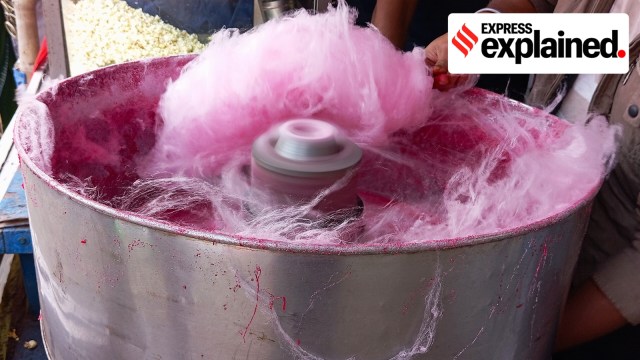Anonna Dutt is a Principal Correspondent who writes primarily on health at the Indian Express. She reports on myriad topics ranging from the growing burden of non-communicable diseases such as diabetes and hypertension to the problems with pervasive infectious conditions. She reported on the government’s management of the Covid-19 pandemic and closely followed the vaccination programme. Her stories have resulted in the city government investing in high-end tests for the poor and acknowledging errors in their official reports. Dutt also takes a keen interest in the country’s space programme and has written on key missions like Chandrayaan 2 and 3, Aditya L1, and Gaganyaan. She was among the first batch of eleven media fellows with RBM Partnership to End Malaria. She was also selected to participate in the short-term programme on early childhood reporting at Columbia University’s Dart Centre. Dutt has a Bachelor’s Degree from the Symbiosis Institute of Media and Communication, Pune and a PG Diploma from the Asian College of Journalism, Chennai. She started her reporting career with the Hindustan Times. When not at work, she tries to appease the Duolingo owl with her French skills and sometimes takes to the dance floor. ... Read More
Why Karnataka has banned food colouring used in gobhi manchurian and cotton candy
Recent testing by the state government found artificial colouring in 107 of 171 gobhi manchurian samples, and 15 of 25 cotton candy samples.
 A cotton candy machine in a Kolkata fair. (Wikimedia Commons/Representative)
A cotton candy machine in a Kolkata fair. (Wikimedia Commons/Representative)The Karnataka government recently “banned” the use of harmful colouring agents in gobhi manchurian and cotton candy, with a violation attracting imprisonment of up to 7 years and fine of up to Rs 10 lakhs, Karnataka health minister Dinesh Gundu Rao said.
“Consumption of snacks containing these artificial colours may pose long-term health risks, including cancer. Therefore, the health department has taken this necessary action,” he said.
Artificial colouring was found in 107 of the 171 gobhi manchurian samples tested by the state government, and in 15 of the 25 cotton candy samples tested. “Based on these findings, an order has been issued banning the use of prohibited artificial colours, including Rhodamine B, in Gobi Manchurian and cotton candy,” the minister said.
What is Rhodamine B?
While the minister said that Karnataka was banning the use of the colouring agent Rhodamine B, it is not one of the permitted food colouring agents under the country’s food safety regulation. It is a chemical colour used in dyeing clothes, paper, leather, printing, and plastics. It is used to give red and pink colours.
The dye is not fit for consumption and may lead to acute toxicity. Exposure to the chemical may also damage the eye and cause irritation in the respiratory tract. While the International Agency for Research on Cancer — the World Health Organisation body that maintains a list of cancer causing agents — says it cannot be classified as carcinogenic to humans, there are some studies on rats that have shown carcinogenic effects.
Is it frequently added to food products in India?
Not commonly. A food safety officer told The Indian Express: “Rhodamine B is usually reported from small road-side vendors in small cities. This is because of a lack of understanding about dyes that are permissible in food items. Small vendors are not aware that this dye can be harmful as effects might not always be felt immediately. They might just go to a shop and ask for a red colour, not knowing what is given to him.”
The officer said it is usually “illegally” added to preparations such as gobhi manchurian, potato wedges, butter chicken, pomegranate juice, ice-creams produced in small scale, or cotton candies.
“This is usually not seen in bigger cities such as Delhi and Mumbai. Although no colouring is allowed in cooked food, in the bigger cities usually edible food colours are used to give the red colour in butter chicken and tandoori chicken,” the officer said.
What are the food colours that are allowed by the food safety act?
The Food Safety and Standards Authority of India (FSSAI), the country’s apex food safety regulator, allows the use of very few natural and synthetic colours in food items. There is also a restriction on which colours can be used in what type of food product.
“Rhodamine B is a common red dye; it is even used in Holi colours. However, it is thought to be a carcinogen and its use is not permitted in food products. In fact, only about ten colours are allowed to be used in foods,” Saurabh Arora, founder of the Food Safety Helpline, told The Indian Express.
According to him, the natural food colours whose use is allowed includes carotene and carotenoids (yellow, orange), chlorophyll (green), riboflavin (yellow), caramel, Annatto (orange-red, derived from the seed of an American tree), saffron, and circumin (yellow, from turmeric). The synthetic colours allowed include red from Ponceau 4R, Carmoisine, and Erythrosine; yellow from Tartrazine and Sunset Yellow FCF, blue from Indigo Carmine and Brilliant Blue FCF, and green from: Fast Green FCF.
Even permissible food colourings, however, are not allowed in all food items. Some food items that can use these colours include ice creams, biscuits, cakes, confectionaries, fruit syrups and crushes, custard powder, jelly crystals, and carbonated or noncarbonated beverages, Arora said.
Photos
- 01
- 02
- 03
- 04
- 05






































